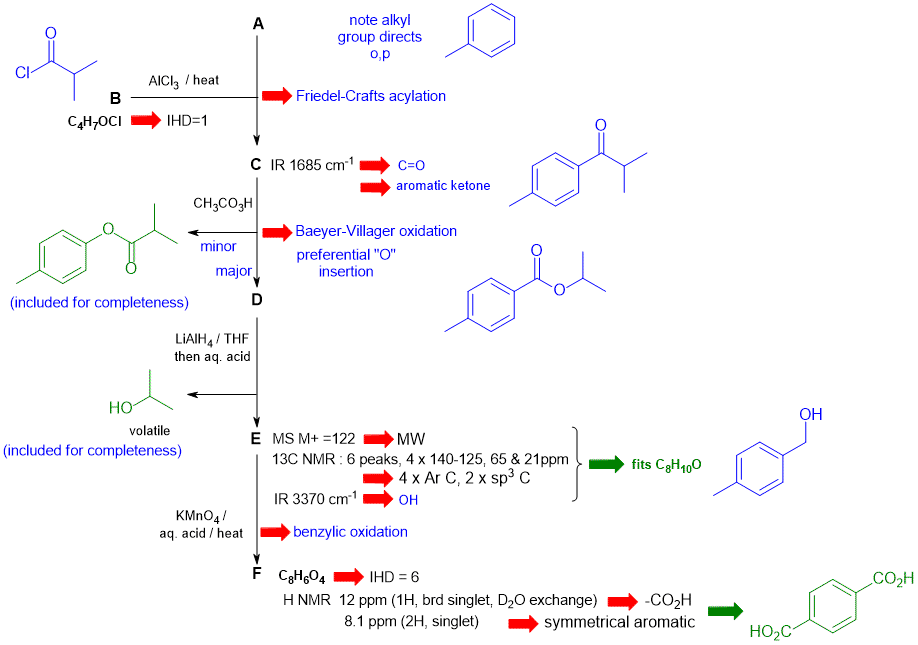Note that these types of questions are often the most difficult on the examination. This is because they are holistic in that they require a good understanding of the reactions and the concepts and the ability to apply those concepts from the course as a whole. They can't be memorised, they require understanding and ability to apply. Hence they help discriminate those who truly understand from those who have memorised and will soon forget.
A schematic of the solution is shown below. The information from the question is given in black. Deductions directly from this information are indicated by red arrows. Points that provide potential key information are shown in green which leads to the structures...
In this problem key steps to success are:
1. F is a para-disubstituted dicarboxylic acid indicating the presence of the methyl substituent in A, C-E.
2. 13CNMR data (sp3 C shifts) for E suggests a methyl substituted benzylic alcohol rather than ethyl phenol
3. A + B --> C suggests a Friedel-Crafts acylation so B is an acyl chloride, C a para-substitued aromatic ketone
4. Since the Baeyer-Villager goes away from the aromatic (see 2 above), B must be branched, C a ketone and D an ester
There are, of course, other possible thought pathways.

Common errors:
1. B not branched which would cause problems with the Baeyer-Villiger selectivity (see below)
2. A missing or incorrect substitutent that is inconsistent with the question information (e.g. activated for Friedel-Crafts acylation to work
3. Not addressing the selectivity in the Baeyer-Villiger reaction (migratory preference H > 3oR > 2oR > Ar > 1oR > CH3 (less likely) which defines the ester D and hence alcohol E.
4. For E & F: structure inconsistent with spectral data.